 Lords
Saints
People
Places
People
Contact
Lords
Saints
People
Places
People
Contact
[credit to Martin Harper for his research]
Wellbank, Lowther Road
The first reference to Wellbank (Walbanke) in the Parish Church registers dates from 1627:
The damaged 1851 census doesn't readily match anyone in the Well Bank location, but a burial of John Blomerley at St Mary's recorded his abode as Wellbank.
Old Mill was rebuilt in 1912, and imaginatively renamed "New Old Mill". After the visit of King George VI and Queen Elizabeth in 1942, it was renamed the Royal Mill, and the entrance (which was once a continuation of Cotton Street) hints at the history.
In 1797 James had also founded McConnel & Co., fine cotton spinners. The McConnels purchased the English patent rights of the Heilman Comber, a machine for combing the fibres of cotton, worsted, flax etc to remove short fibres, clean out extraneous matter, and lay the fibres more or less parallel to each other. This advantage led to the McConnel mills becoming the second largest in the world, and Mr. McConnel was thus one of the aristocrats of the industry. While widespread terrible working conditions prevailed, McConnel and Kennedy were commended by a factory inspector for "the neat condition of the rooms, and the attention to cleanliness and ventilation". James Snr, left his concerns to his three sons James, William & Henry.
[Ref: By Scanned by Mr Stephen - Scanned from A Century of fine Cotton Spinning, 1790-1913. McConnel & Co. Ltd. Facing p 24., Public Domain, link]
John also has a stained glass comemmorating him in St Colmon's Church, Colmonell
John Wild had been a J.P. and lived at ‘The Uplands’, now part of the site of Whitefield Heath Centre and had 6 sons, one of which was Walter Wild Snr.
Following the death of Mrs Wild in June 1952 the Rosemarine family moved into Wellbank and they were to be the last residents. Barnett ‘Barney’ Rosemarine and his wife Ella, nee Taylor, had married in 1937 and had 4 children.
Barney Rosemarine was also a popular stand-up comedian who performed under the name Jock Marine, and published a lighthearted poetry book of English/Yiddish humour called "Haimishe Laffs And Chaffs".The book looks at Jewish people who had pleasant memories of the early years in the town they where born. The contents are meant to give a nostalgic regard for the the years gone by.

Burial: 19 Nov 1627 St Mary the Virgin, Prestwich, Lancs.
Ellinora Tomlison - relict of Johis Tomlison
Abode: Walbanke
Further families listing Well Bank (or variants) as their abode appear in the registers of St Mary's throughout the 17th and 18th centuries:
1627 Johis Tomlison ("Walbank")
1660 & 1678 Johani Tomlinson(senior)
1663 Johis Tumlinson ("Woebanke")
1682 John Jackson
1687 Eliza Tomlinson
1695 Elizabeth Platt
1697 James Tomlinson
1696,1698,1701,1708,1710,1713,1715,1726 William Tomlinson
1699 & 1700 George Chapman
1720 & 1721 Luke Neild
1734,1738,1740,1743 & 1744 James Greenhalgh
1735 Jeremy Platt
1740 James Crompton
1747 James Chapman
1777 J. Bowker
1777 Thos. Fletcher
1778 John Beswick
1778 James Brierley
1781,1782 James Chapman(deceased by drowning)
1781 John Greenall
1803 Charles Ashton
Several of the above were recorded as "husbandman" i.e. tenant farmers, and there is also a lease for the tenement of Wellbank dated 1781.
The 1841 census shows two families living in the area of Well Bank in Prestwich, the area was close to Prestwich Hills and Diggle Fold Farm (Sandy Lane).
Burial: 6 Jan 1850 St Mary the Virgin, Prestwich, Lancashire, England
John Blomley - Son of James Blomley
Age: 72 years
Abode: Well Bank Prestwich
Notes: [Abode] Bunkers Hill [crossed out and initialled] J.B.
Buried by: John Booker Curate
Jumping to the 1861 census we find the property may have improved some degree, with a cattle dealer, Richard Brown found in residence. Regular occupations around the location would be weavers or agricultural labourers.
In 1871, a hotel proprietor had moved in, William Smith, he and his wife and two children got by with a Housemaid,Cook and an outdoor servant. By 1881 William had become a wine merchant living at Well Bank, however the electoral roll showed John William McConnel was registered there.
The 1891 census shows a John Wanklyn McConnel registered at Well Bank, he was a non practising barister, and managing director of cotton spinning mills as well as being a magistrate.
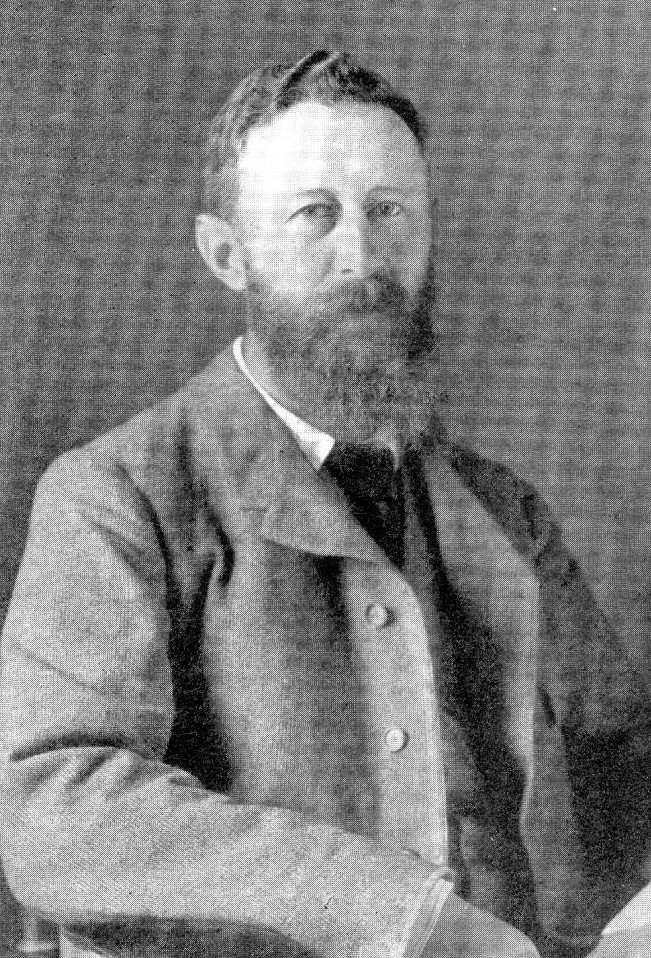
John W McConnel

1891 map, confirming a larger property had now been built
[note the path down from wellbank towards Buckley's has been moved to the left, they must have got fed up of the traffic]
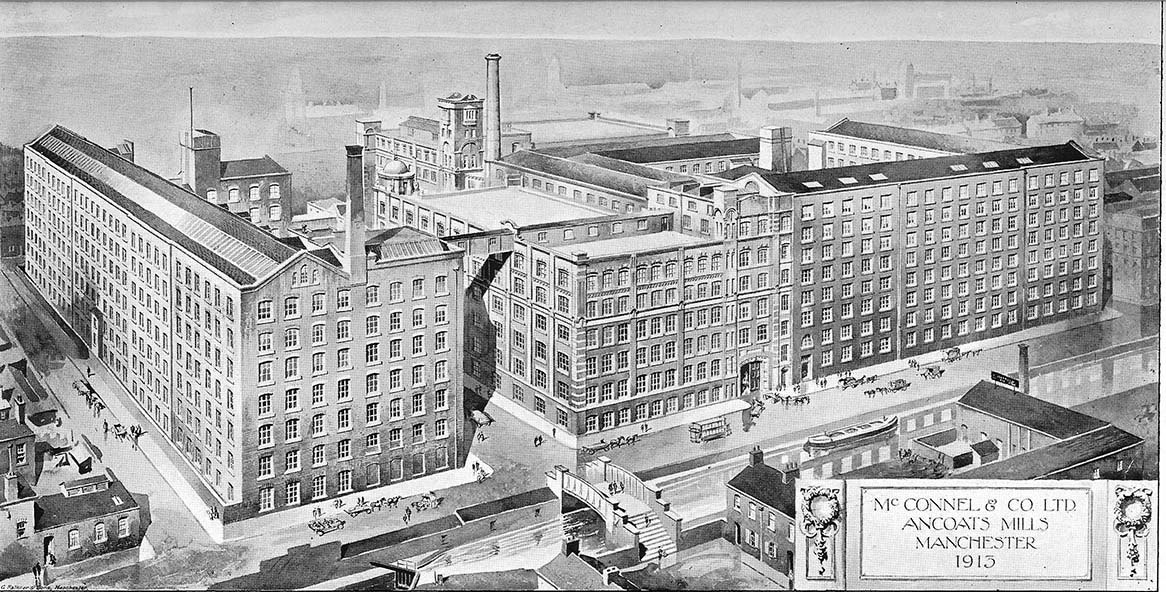
McConnel & Co Mills
(Grade II listed) were the largest cast iron structure in the World when built by Sir William Fairbairn's company, Fairbairn & Lillie
[John's father, William McConnel, lived at Brooklands on Bury Old Road, 1861, and married Margaret Bradshaw Wanklyn in 1852, whose father, William Wanklyn, a descendant of John Wanklyn was one of Oliver Cromwell's Commissioners, and who fought for him at the battle of Worcester, but whose property was confiscated on the accession of Charles II., and given to the Earl of Essex]
[Uncle Henry lived in Cressbrook Hall, in the Peak District 1861]
[John's uncle James, was to be found in Bent House in 1851 and BentHill in the 1860's]
John became the director of the Fine Cotton Spinners and Doublers Association from 1898, and published papers on the technology of the cotton industry and its productionand consumption across the British Empire.
In 1873 he entered St John's College, Cambridge, and 1875 he took the position of sub-lieutenant in the 3rd Cambridgshire Rifle Volunteers, but by 1901, the census shows John W, solicitor and director of cotton mills, along with his wife (Caroline) Edith living in Well Bank. The family was not present in 1911, as John had travelled to America on the RMS Mauretania, holder of the Blue Ribband for the fastest crossing of the Atlantic for 20 years, a record which had previously been held by her sister ship, RMS Lusitania. Though the family remained on the electoral register at Well Bank.
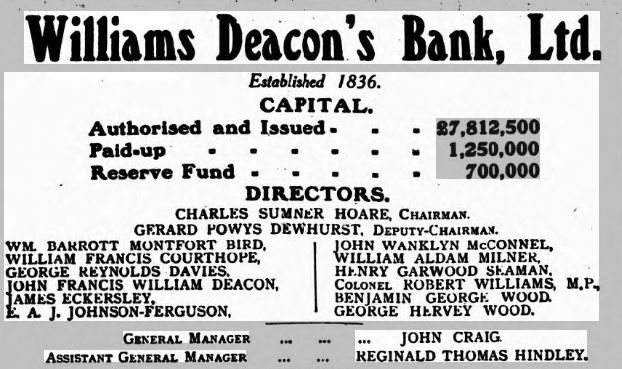
Between 1913-1921 John is listed as a director of Willams & Deacons Bank.
John had been crossing the Atlantic over the years, and in 1915, John was one of the survivors of the sinking of the RMS Lusitania when it was torpedoed by a German U-boat. RMS Lusitania had breifly (3 months) been the fastest and largest passenger ship in the world until RMS Mauretania was built.
The entire Atlantic had been declared a war zone in 1914, and as RMS Lusitania headed from New York to Britain on the 7th May 1915, with Ireland in sight,she was torpedoed. A second explosion (arguably due to munitions on board - not confirmed until 1982) took her to the bottom within 18 minutes of the first, with the deaths of 1,198 crew and passengers. The Germans claimed the munitions made her a valid target.
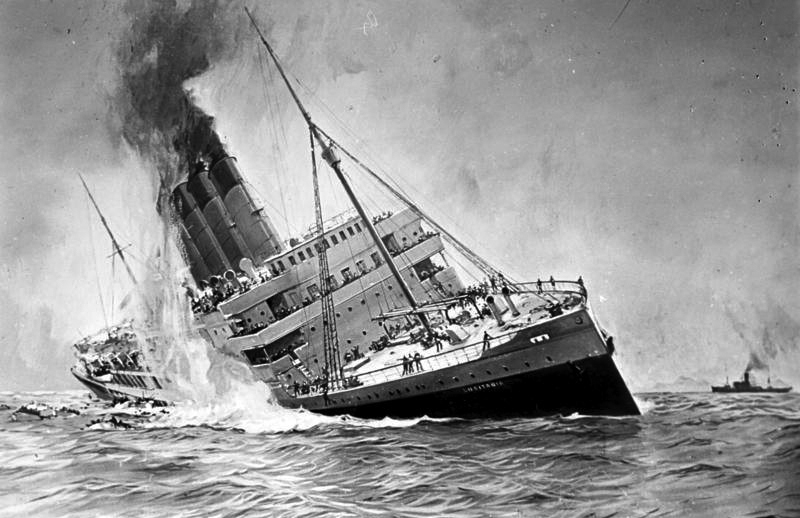
The sinking of the RMS Lusitania
[Ref: By Bundesarchiv, DVM 10 Bild-23-61-17 / CC-BY-SA 3.0, CC BY-SA 3.0 de, link]
Read John's recollection of the sinking here
The McConnel family lived at Wellbank until the 1920's, with John's wife Evelyn finally entering the electoral register after women gained the right to vote in 1918. John was the eldest son of William McConnel who lived at Brooklands (Bury Old Road 1861) and fromerly Deyne Brook (Rectory Lane)
[William's brother, James, lived at Bent House in 1851, and Bent Hill in the 1860's]

John W McConnel died at Wellbank in 1922, aged 67 and is comemmorated in St Marys' Church (above)
During the 30s and 40s the housing estates of Prestwich crept ever closer and Wellbank was demolished, replaced with blocks of flats "Brentwood Court" in the 1970's.
Wellbank was then purchased by the Wild family of Radcliffe, Mr John Wild had founded the papermaking industry at Radcliffe at his Broad Dumers Mill off Dumers Lane and also owned the Newbridge Paper Mill on Dumers Lane.
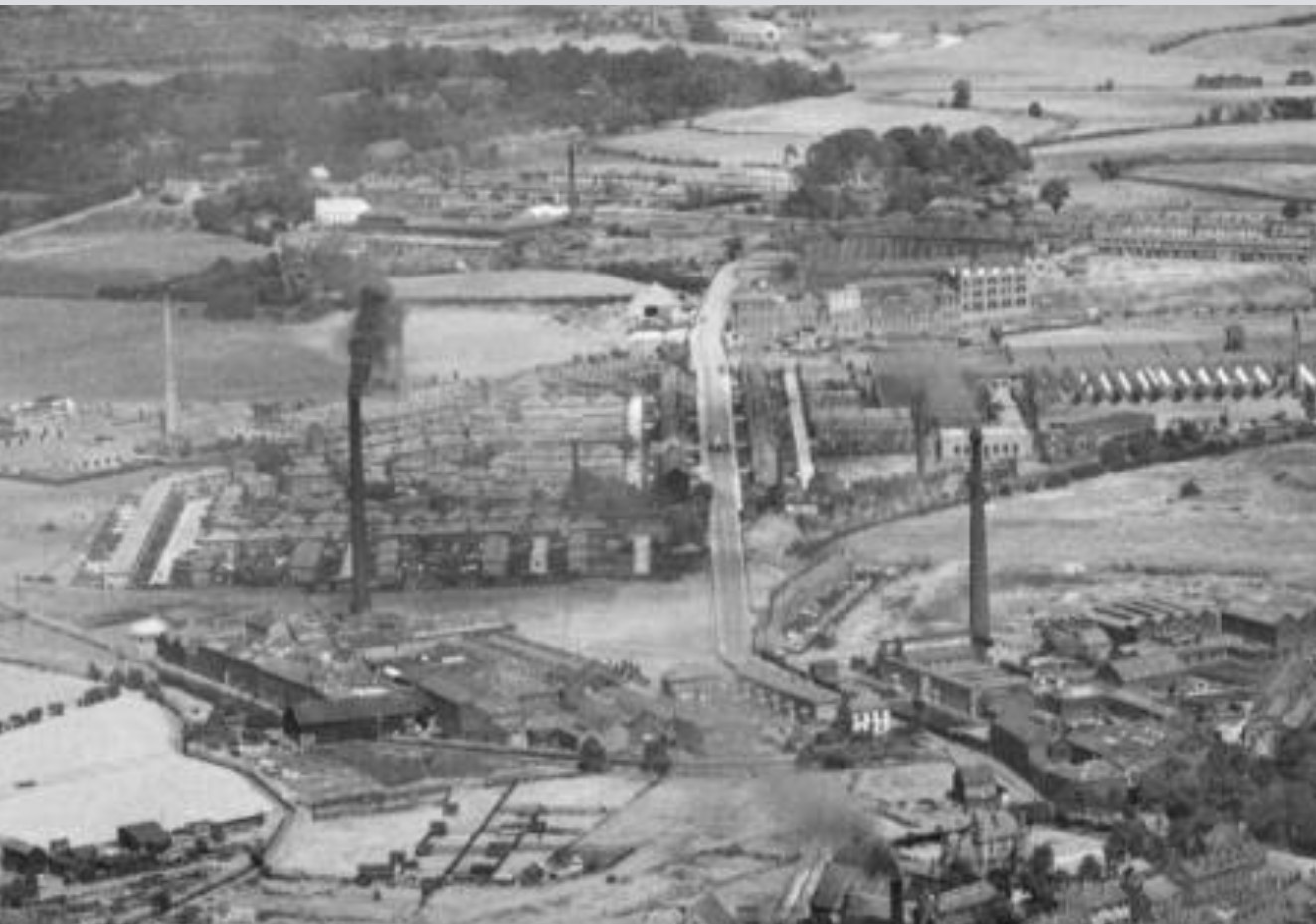
Broad Dumers Mills (with black smoke).
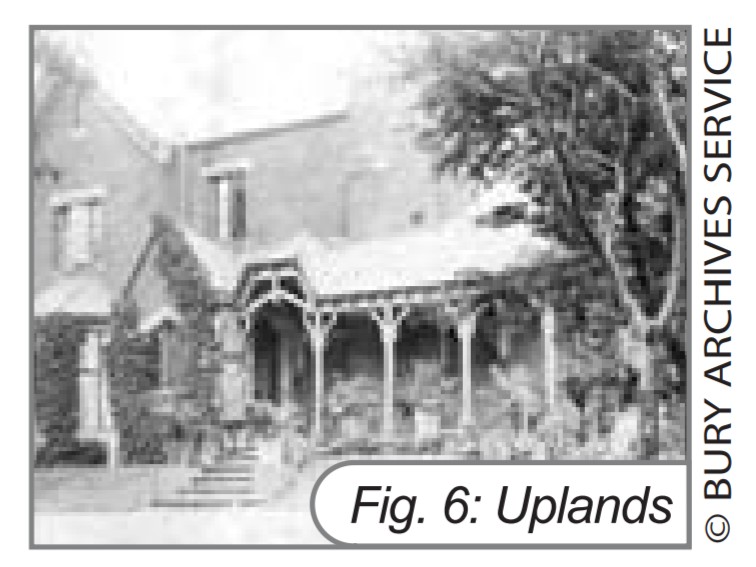
Uplands
Walter senior died in June 1916 leaving a widow, Lucy Mona Wild, nee Newman, along with six children. It was his widow Lucy that moved into Wellbank. In the 1939 Register, Walter Leslie Wild was living with his mother along with 2 servants in the house and a Gardener and his wife in a cottage in the grounds. Previously they had lived at ‘The Elms’, a large house with grounds near to where Elms Playing Field is now in Whitefield. Mrs Wild was involved with Stand All Saints Church.
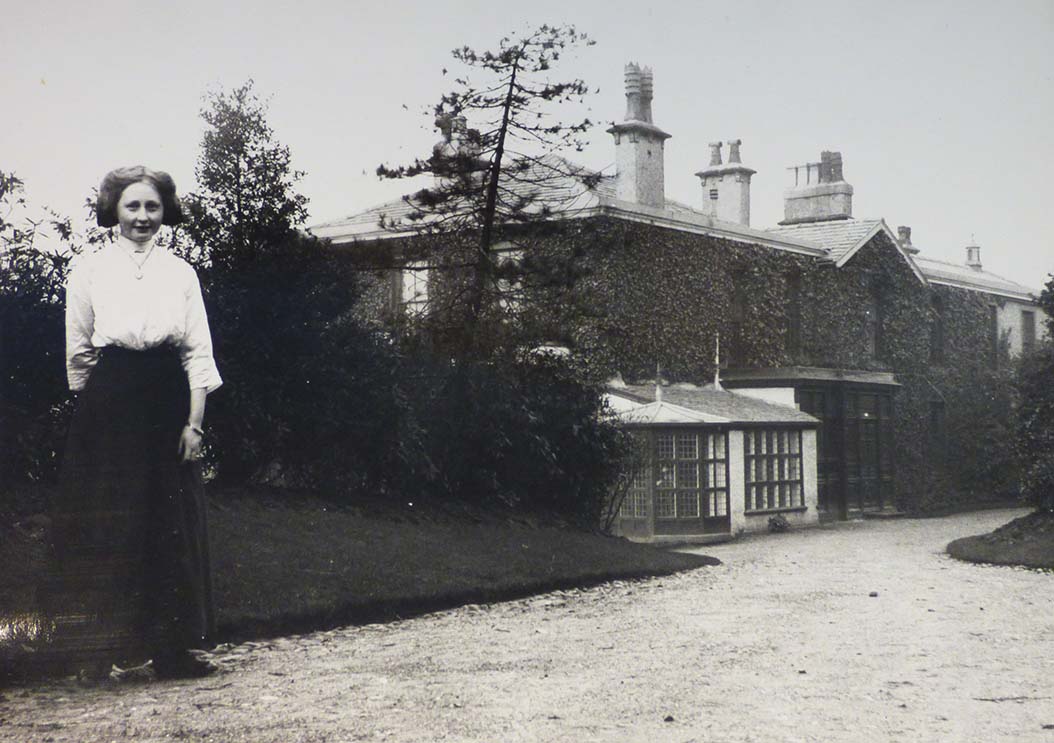
Wellbank, and Mrs Walter Wild (circa 1910)
Barneys parents, Harry & Mary, had built a successful garment factory on the outskirts of Manchester. They had named one of their raincoats ‘The Barney’, which effortlessly shrugged off Manchesters notorious wet weather. A branch of the family are today in the leather goods business and two of their current products are called ‘The Wellbank’’ and ‘The Lowther’’ as a tribute to the Prestwich heritage of the family.
One of Barney & Ella’s daughters remembers the large house that Wellbank was, its bell system in each room to call servants in older days, the tennis court that was sold to build a bungalow, the 9 hole mini golf course they had in the hilly grounds, the stables and two garages and of a septic tank as the house was not originally on mains sewerage. They had a live in nanny who was with them for 24 years and a daily help that lived in the cottage on the grounds. The servants quarters were upstairs off a large linen room and self-contained with their own bathroom and toilet. As befitting a house of its status it had a wine cellar and also a coal cellar that could be reached by outside steps.
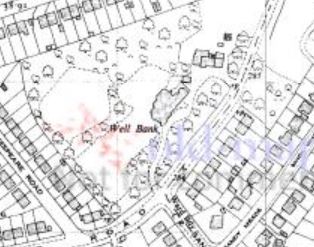
The encroachment of housing upon Wellbank (1953).
On a sadder note Mr Rosemarine was involved in a car accident in 1960 and lost a leg, never really accepting that there were certain things he could no longer do easily himself. The family moved in 1973, the property and land were sold to Alex Langsam who developed the complex of flats that is now Brentwood Court. One block still has the name Wellbank above the door.